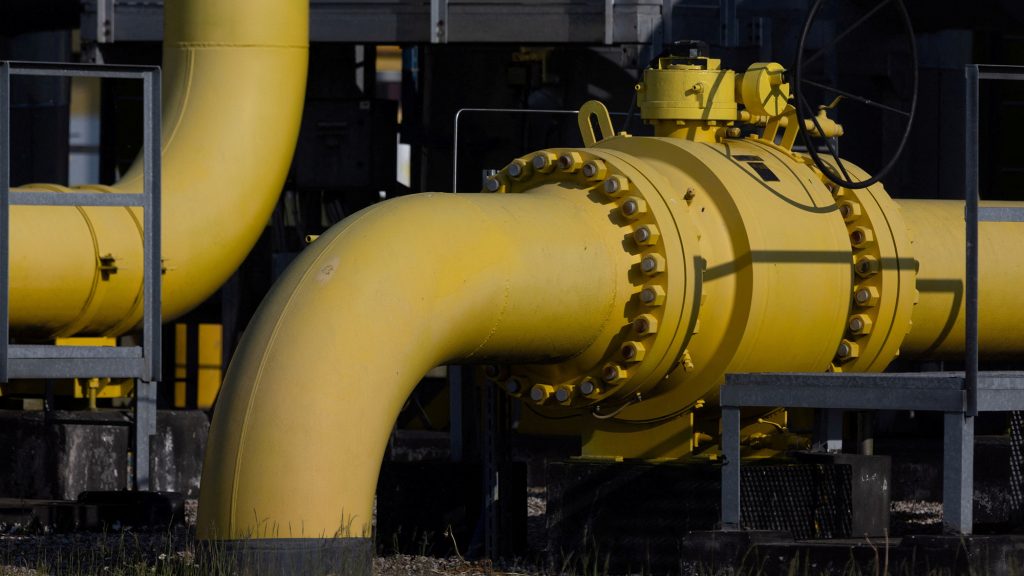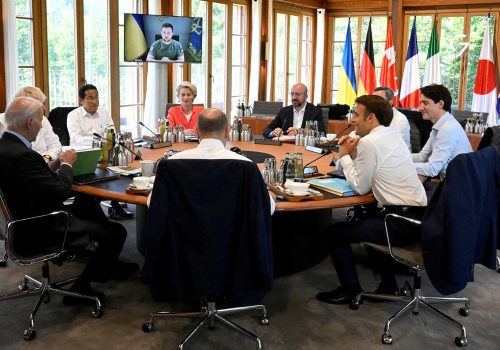The Russian oil “price cap,” which Group of Seven (G7) countries have been promising for some time in response to Russia’s war in Ukraine, is finally becoming a reality. Last week, the US Treasury Department’s Office of Foreign Assets Control (OFAC) published a determination to pursue the cap, along with detailed guidance for market actors. On Friday—after an extended period of haggling—European Union (EU) ambassadors reportedly signed off on an initial fixed cap of sixty dollars per barrel. Other participating members in the price cap will also have to sign off in the coming days.
When we first looked at the debate in June, Secretary Janet Yellen’s Treasury was a strong proponent, but the EU was skeptical. By October, the EU had become a strong advocate and included in its eighth package of sanctions a promise to implement the cap before the EU ban on seaborne imports of Russian oil comes into effect on December 5.
A senior US team was in Brussels two weeks ago to iron things out. The fact that details as fundamental as the level of the cap are being agreed so close to the deadline betrays the extent to which conversations have been heated. Contracts on shipments that will arrive after December 5 have already been signed, and we hear the cap will only apply to shipments which are “loaded” after the date.
As implementation of the price caps finally gets under way, we will get answers to three critical questions:
1. How will the price cap work? And will it work?
The cap prevents firms in participating countries from providing shipping, insurance, and other services including trading and brokering to shipments of Russian crude oil that are sold above a certain per-barrel price, in this case sixty dollars. In practice, the onus will be on these providers to ask their clients for proof that they have bought at a cap-compliant price.
OFAC’s guidance shows some regard for the fact that shipping and insurance firms may not have complete information about how much their clients pay for each shipment. It calls upon them to request attestations that the cap has been respected via simple, and already standard, contract provisions. Firms that are requesting these (and have no reason to believe they are false) aren’t likely to face enforcement actions. This approach does give OFAC and its counterparts the authority to pursue whoever may have lied in an attestation, for instance by making a separate transaction above the cap.
For now, the cap isn’t as low as some would wish. Russian oil is already trading at a discount: about sixty-nine dollars per barrel compared to eighty-six dollars for Brent crude.
Some EU member states were pushing for a much lower cap—one which would remove Russia’s ability to turn a profit. They obtained a slight drop from a proposed sixty-five-to-seventy dollars to a (reportedly) final level of sixty. Even this was enough to generate concerns over implementation from the US Treasury.
At sixty dollars Russia would still turn a strong profit. The much-discussed Chinese and Indian buyers the measure is designed to affect would simply use the cap in their negotiating tactics. When the stakes are low, it isn’t worth circumventing Western (especially European) firms’ hold on the shipping and insurance markets. If it were, Iran and Venezuela would have had an easier time exporting their oil in recent years.
We also think there will be opportunities for cheating, especially if the price difference between Russian-made Urals crude and Brent crude increases.
History has shown that it is possible for the shipping industry to misrepresent or obscure the origin of its cargo. Meanwhile, exemptions for certain pieces of the Russian production complex (notably the Sakhalin-2 project, which was heavily funded by Japan) suggests that there will be “un-capped” Russian barrels still floating into the market. The cap doesn’t fully address blends that include Russian crudes (perhaps intentionally), suggesting that there may be additional opportunities to maneuver Russian barrels through refined or partially refined products. Finally, it will be difficult for countries enforcing the cap to truly track the price paid, given the market’s opacity.
The primary onus for compliance is placed on the unregulated brokers and traders of Russian oil products. The crucial test of this policy’s viability will lie in enforcement of the cap when breaches inevitably happen. OFAC has threatened cheaters with consequences, but taking action against them may well chill participation by other participants in the scheme and further undermine the dual policy goals of keeping Russian product on the market but cutting revenues for Moscow.
2. What kind of global impact can we expect?
Washington, Brussels, and other capitals will be judged on whether we see Russia’s export revenue decline without prices at the pump at home increasing too much. As long as these two conditions are fulfilled, it doesn’t matter whether the cap is the decisive factor.
For now, the cap is not significantly below the price of Russian crude, so it’s not clear how Moscow will respond. Indeed, Russian President Vladimir Putin has just approved an increase in production. Assuming most of Russia’s supply remains on the market, the effect on prices will be small.
Should global prices increase and the cap force Russia to accept an even higher discount, we do expect Moscow to respond by selling less. The question is whether this is a little less or whether most of Russia’s supply becomes temporarily unavailable. Prices are well down from their July peak. This is mainly due to the risk of a G7 recession, but it is also true that engagement from the governments behind the price cap has reassured market participants. We had initially feared that additional layers of complexity would add tension to the market and result in higher prices.
However, the cap also becomes harder to enforce if prices increase and stay high. Between a sixty-dollar cap and an eighty-six-dollar Brent price, it may not be worth taking the risk of being fined and Russian revenues will be down compared to 2022 anyway. But the temptation will grow with the market price.
While G7 governments decided that a floating cap was too complicated, participating countries can always decide to move the fixed cap by committee. The cap could be moved down if G7 governments believe that enforcement is working. It could also be moved up.
3. What kind of impact can we expect on the Russian economy?
Russia’s export revenues have fallen since the record-breaking second quarter of 2022, due to lower oil prices and lower volumes of gas sold. The second factor—lower volumes—is partly due to Russia’s decision to reduce gas flows into Europe.
Consequently, the Russian government is already struggling to finance the increasing costs of its war in Ukraine and day-to-day spending (some of which is indexed to inflation). The latest budget foresees deficit spending in 2022 and for the three years to come. Initially, the gap was meant to be filled by transfers from the National Welfare Fund, which receives some of the oil and gas export income every year. But the government has now turned to borrowing on domestic markets.
The outlook is certainly bleak. Perhaps bleak enough to argue that Russia needs its oil revenue and will therefore continue to sell, even if the cap becomes more of a constraint than it will be to start with.
Reed Blakemore is the deputy director of the Atlantic Council’s Global Energy Center.
Charles Lichfield is the deputy director of the Council’s GeoEconomics Center.
Brian O’Toole is a nonresident senior fellow at the GeoEconomics Center and a former senior adviser to the director of the Office of Foreign Assets Control at the US Department of the Treasury.
Further reading
Mon, Jun 27, 2022
Can price caps on Russian oil tame the Kremlin? Our experts debate.
New Atlanticist By
Atlantic Council experts weigh in on whether a G7-driven price cap on Russian oil will have the intended effect.
Wed, Oct 19, 2022
Putin’s energy war against Europe also targets the US. Here’s how Washington can fight back.
New Atlanticist By Richard L. Morningstar, Joseph Webster
Washington can do more to mitigate this crisis by boosting crude oil supply, increasing cleaner gas production, and reforming the way it grants permits for new energy projects.
Mon, Oct 3, 2022
European unity is essential as Putin prepares to weaponize winter
UkraineAlert By
European unity will be vital in the coming months as Russia attempts to weaponize winter in order to convince EU leaders to abandon their support for Ukraine and end their opposition to Vladimir Putin's ongoing invasion.
Image: The gas compressor station, a part of Polish section of the Yamal pipeline that links Russia with western Europe which is owned by a joint venture of Gazprom and PGNiG but it is operated by Poland's state-owned gas transmission company Gaz-System, is seen in Gabinek near Wloclawek, Poland on May 23, 2022. Photo via REUTERS/Kacper Pempel.



